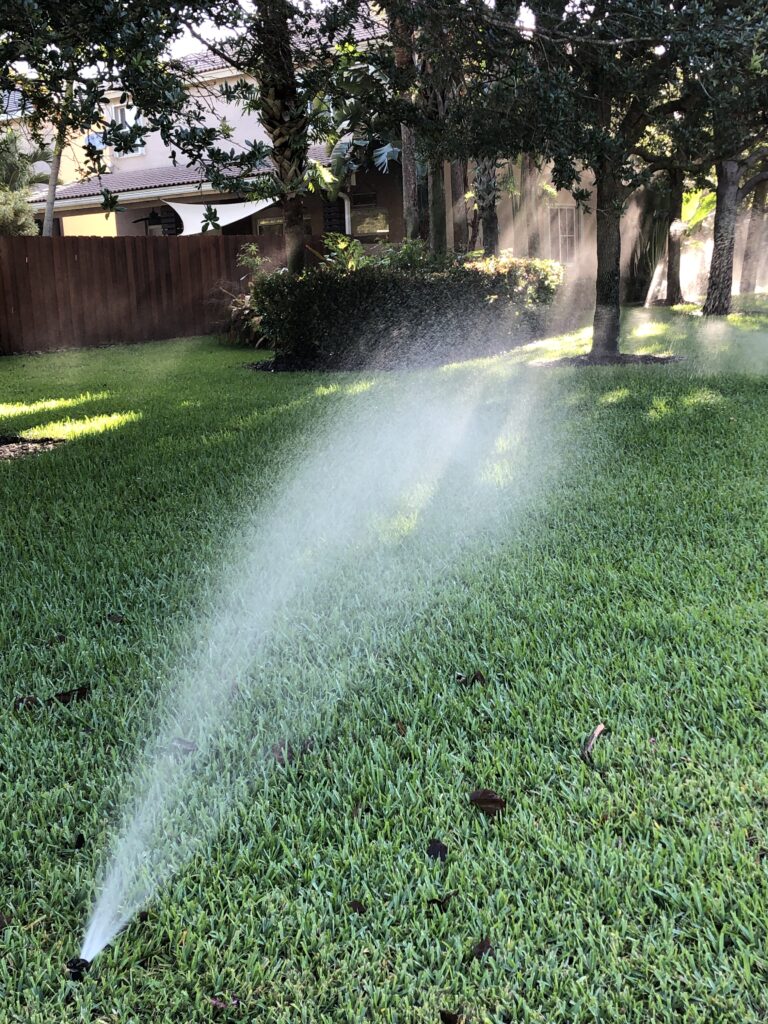It is the beginning of Summer, hurricane season is not far off, and the rainy season has not started in Florida in 2023. Some areas are experiencing exceptional drought, and many locales are beyond normal dry. Drought doesn’t mean running the sprinklers more.

Water is a precious and limited resource. In many areas, too much water is used to irrigate the landscape, and much of that is needless. Over-irrigation causes more problems than it fixes. Too much water on the turf and other landscape plants makes the plants more susceptible to insects and diseases. Over-irrigation stresses the roots and increases their disease susceptibility. Roots need oxygen, and too much water often makes them grow shorter instead of deeply. Also, too much water moves nutrients and other possible pollutants into groundwater, canals, lakes, and streams.
So water it right. Here are a few ideas to help get it right.
Watering daily is forbidden by most regulations and ordinances and is not healthy for plants. Once trees, shrubs, and turf are established, irrigation systems are only needed for the turf. The general rule for sandy, porous soils is: to apply ½ inch to ¾ of an inch of water once to twice per week, including counting rain as an application.
Better yet, turn off the automatic irrigation system and turn it on only when the turf, the most water-hungry plant in most landscapes, shows signs of wilt. Wilted grass turns gray-green, and the blades fold in half.
When irrigation is applied, water so that evaporation is minimized. Various restrictions require water to be used at certain times of the day. If you have a choice, choose to irrigate after midnight or just before sunrise. During this time, the wind is usually at its lowest, reducing the chance of drift, and it is cooler, reducing evaporation.
Reduce other stresses on plants. Raise mowing height, delay fertilizer application, and prune only if necessary. One exception to the pruning rule is if the plant in question is in permanent wilt (Definition from the Dictionary of Botany); pruning to remove all of the leaves may save the plant. This is a drastic measure, and the plant’s survival is not assured.
Mulch everything. Organic mulches placed around the roots of trees, shrubs, and plants in beds reduce evaporation, cool the plant roots, and suppress water-stealing weeds. Apply mulch to a depth of 3 to 4 inches. Keep the mulch from touching the base of buildings, trees, and shrubs.
Irrigation systems need regular maintenance. They are susceptible to physical damage. Lawnmowers are notorious for removing heads and turning the nozzles the wrong way; kids and gardeners with shovels find lines to break, and cars parking on the lawn are irrigation line crushers. Many experts recommend turning on your system weekly to check for damage – monthly is more easily managed by most folks unless there is evidence of a significant problem.
Take care of our shared liquid resource, fresh water; it is golden. Other tactics are available for caring for the landscape’s water needs – drought doesn’t mean running the sprinklers more.
Leave a Reply